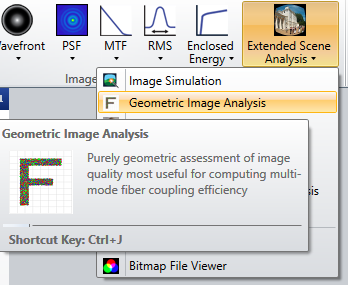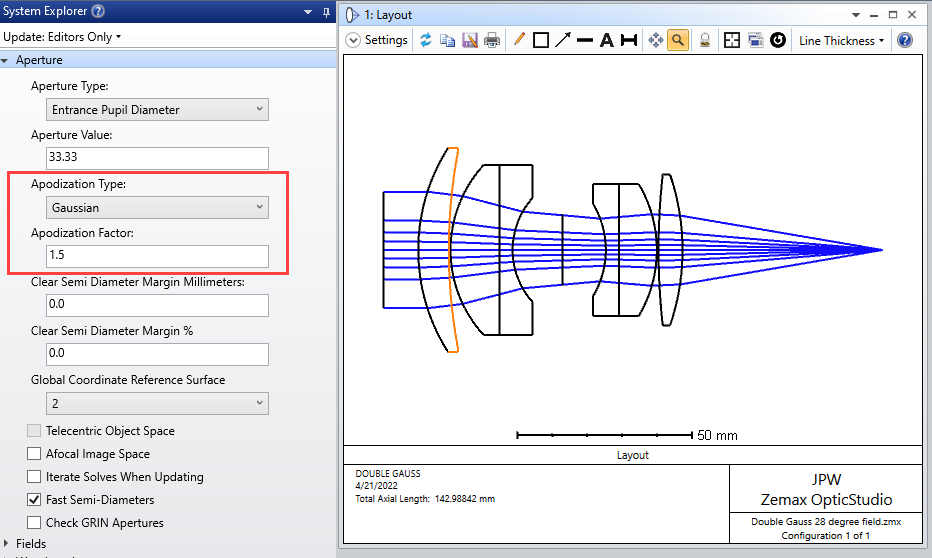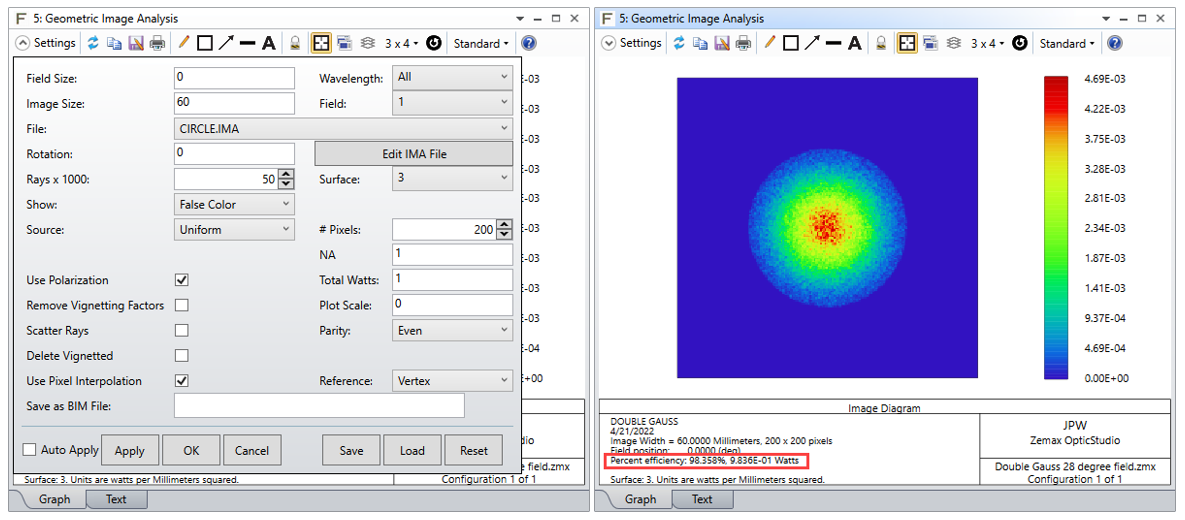Hello,
Does the POPD merit function operand using data = 1 (system efficiency for fiber coupling) take into account Fresnel losses, performance of applied coatings, vignetting , and internal material transmission? Also wondering if these are accounted for when using POPD data = 40, 41, 42 (fraction of total power within a defined radius).
If the apodization is set to gaussian do the vignetting diagram and transmission analysis (in polarization drop down menu) take the gaussian nature of the ray distribution into account?
Trying to find best method for determining transmission (by surface) for a gaussian beam through the system taking into account Fresnel losses, applied coatings, vignetting, and internal material transmission.
Any help is much appreciated.
Thanks,
island optics









